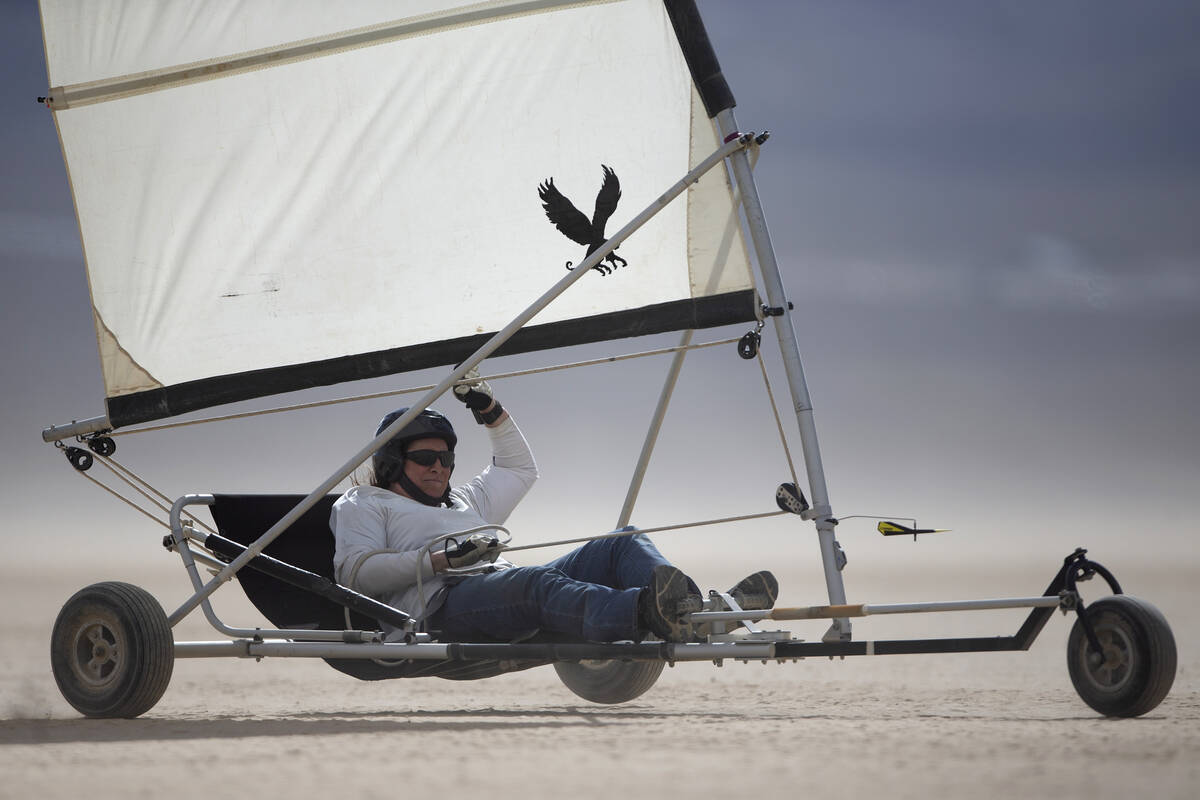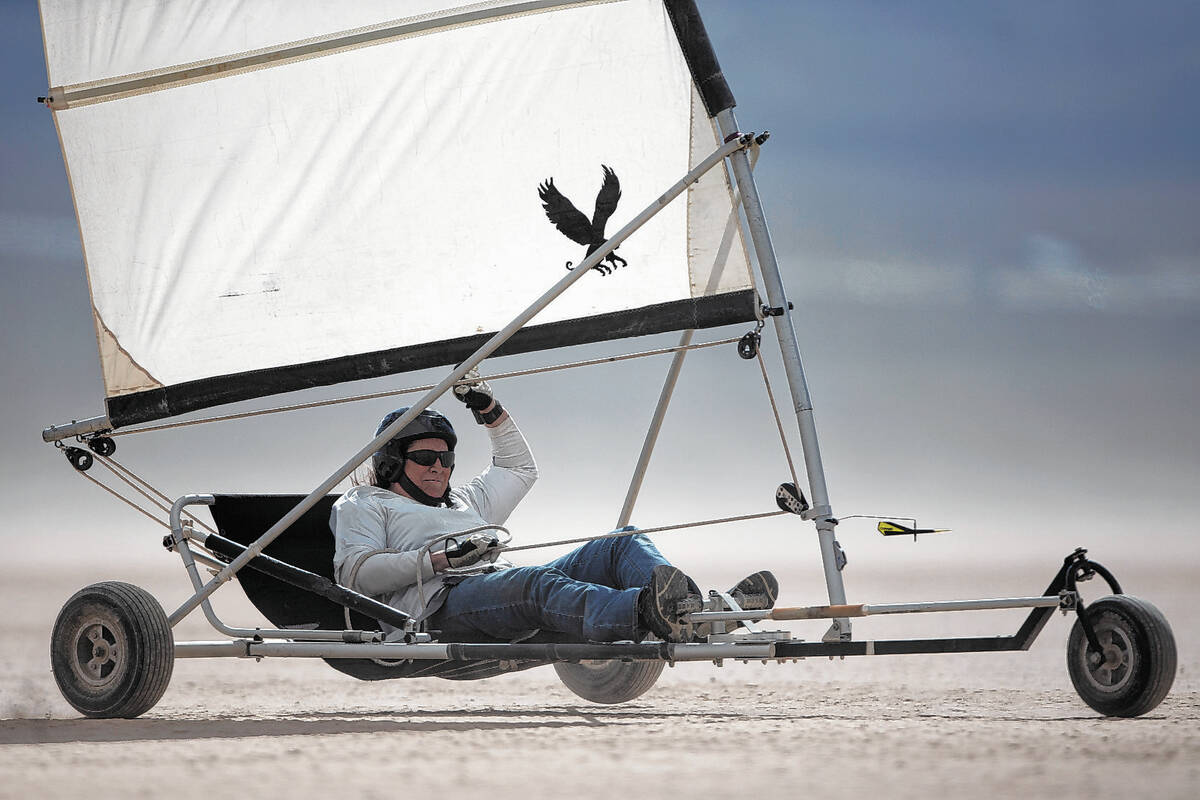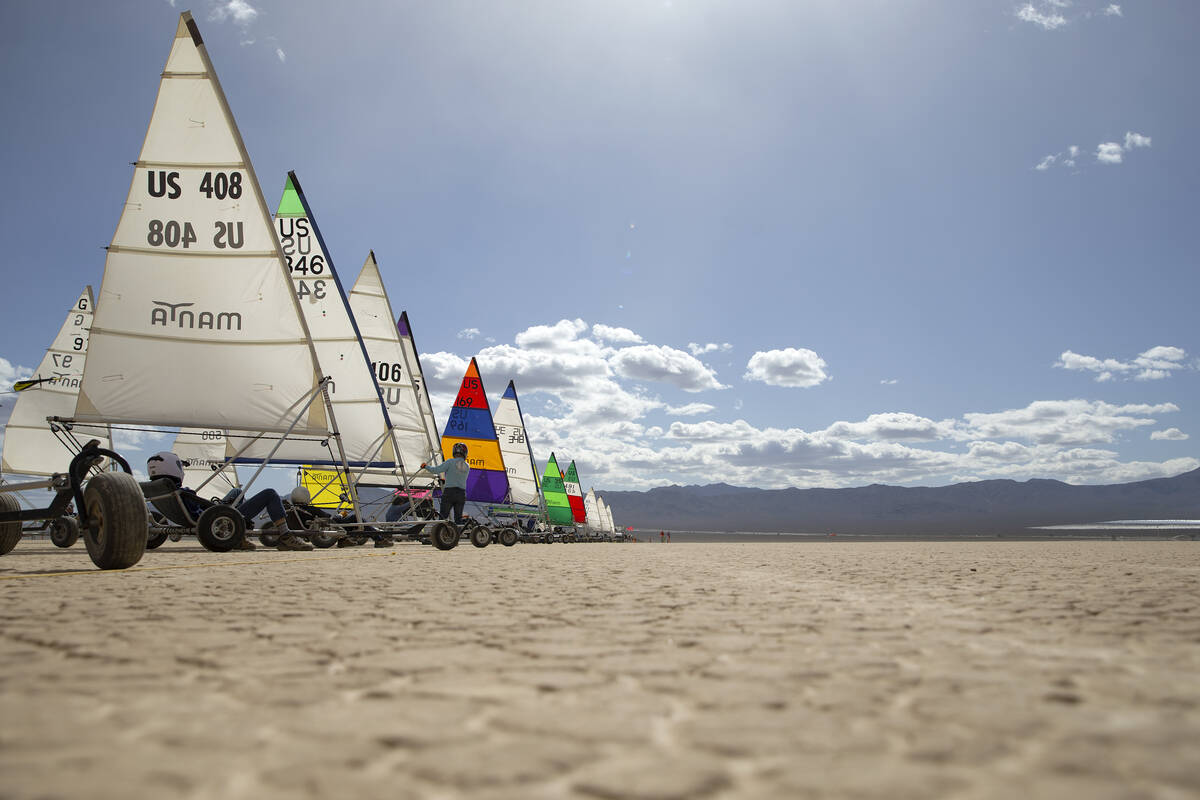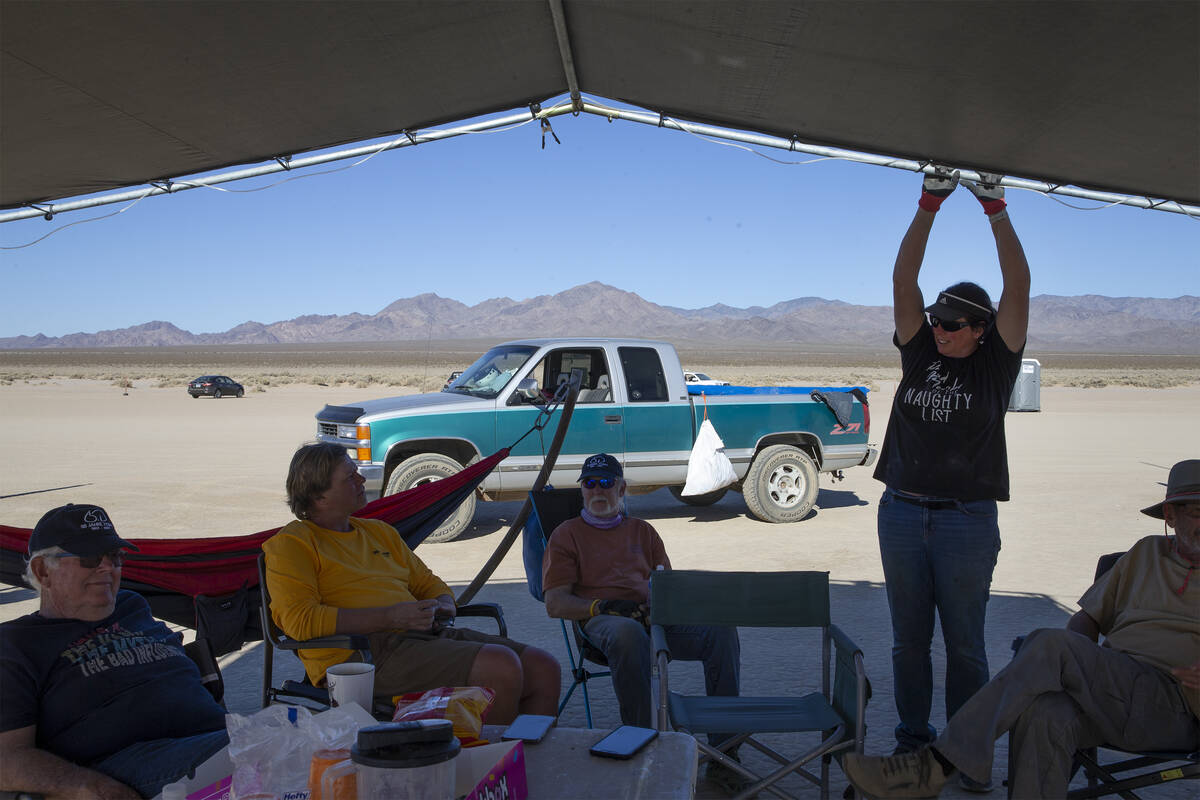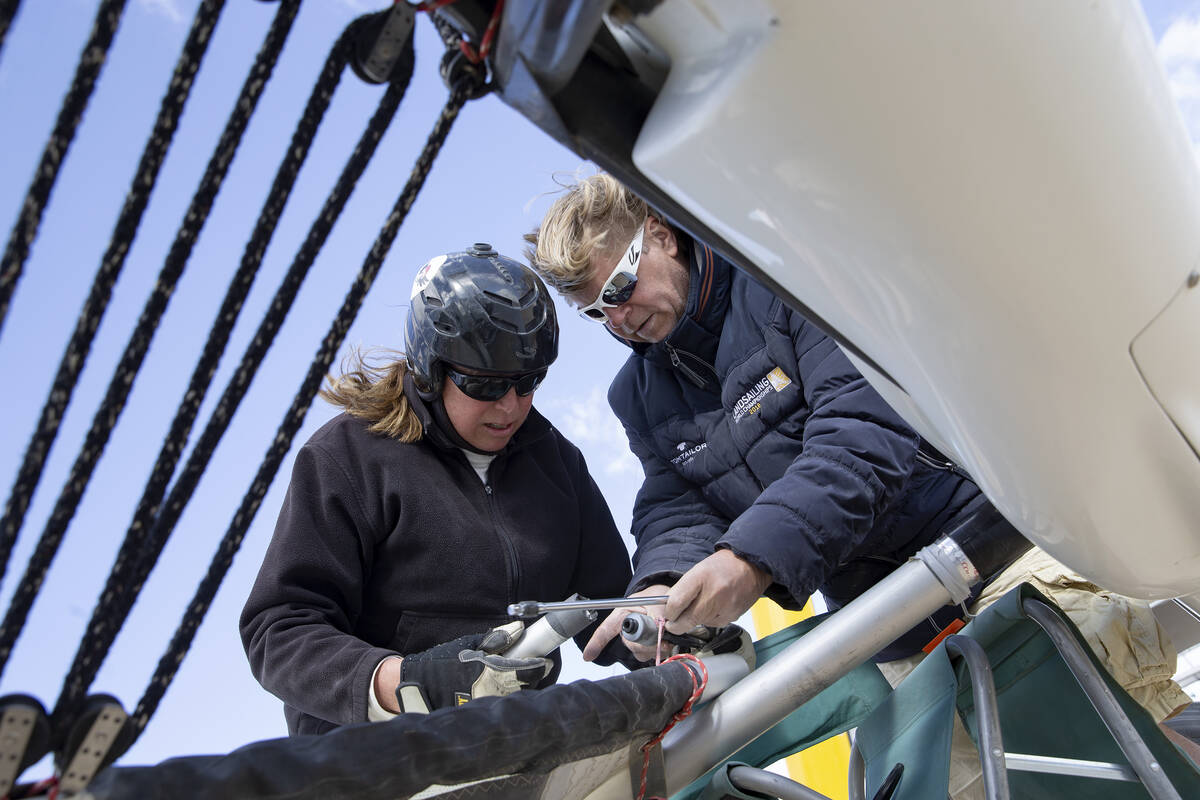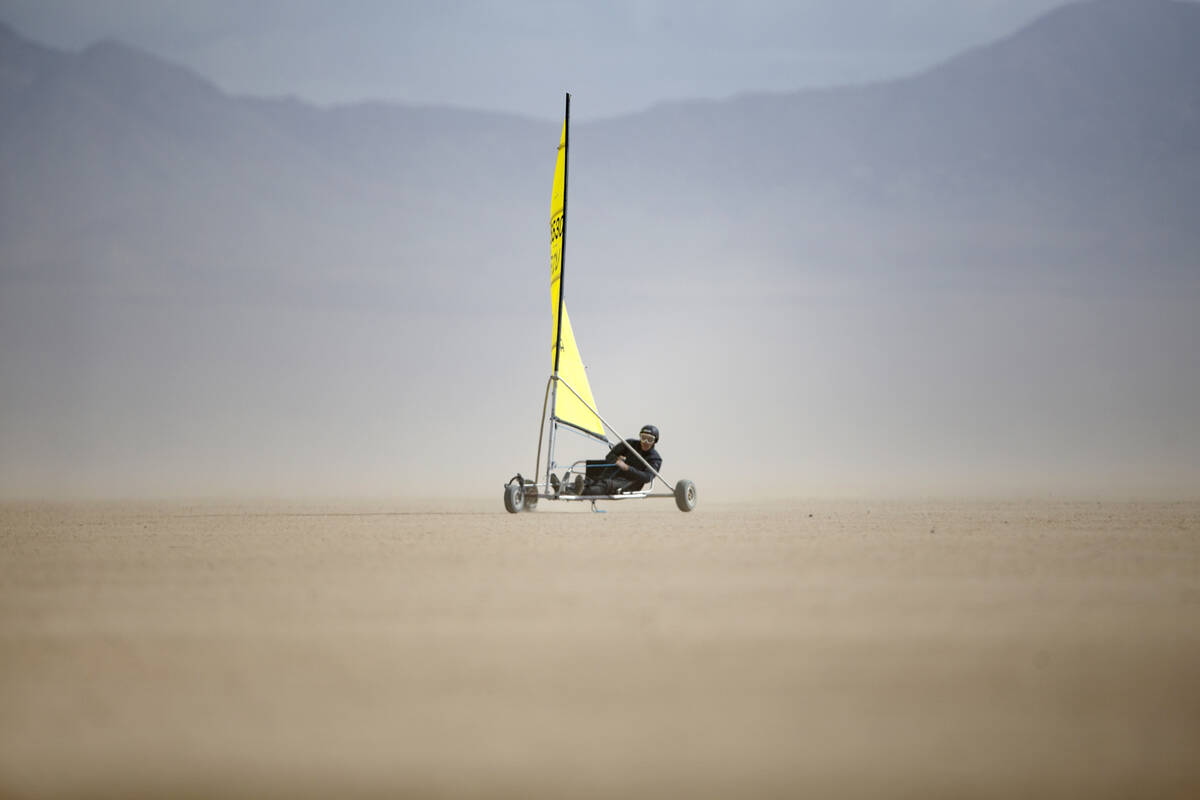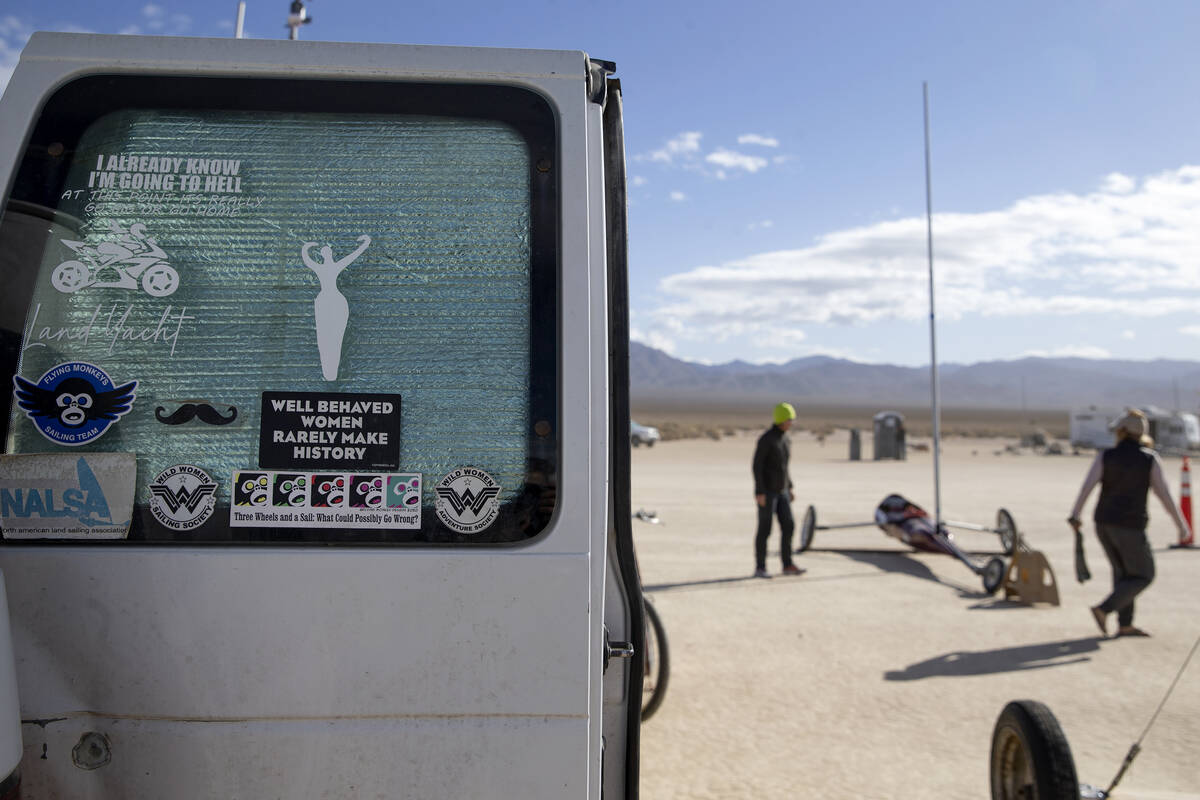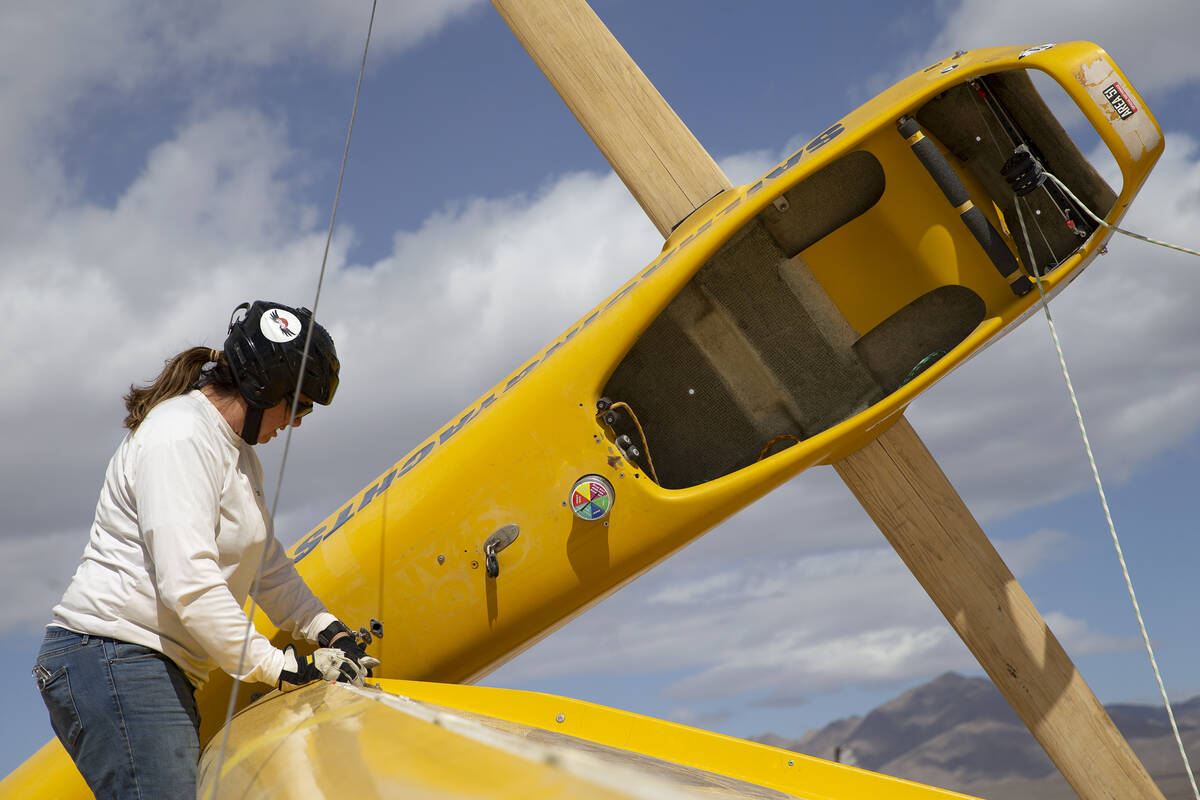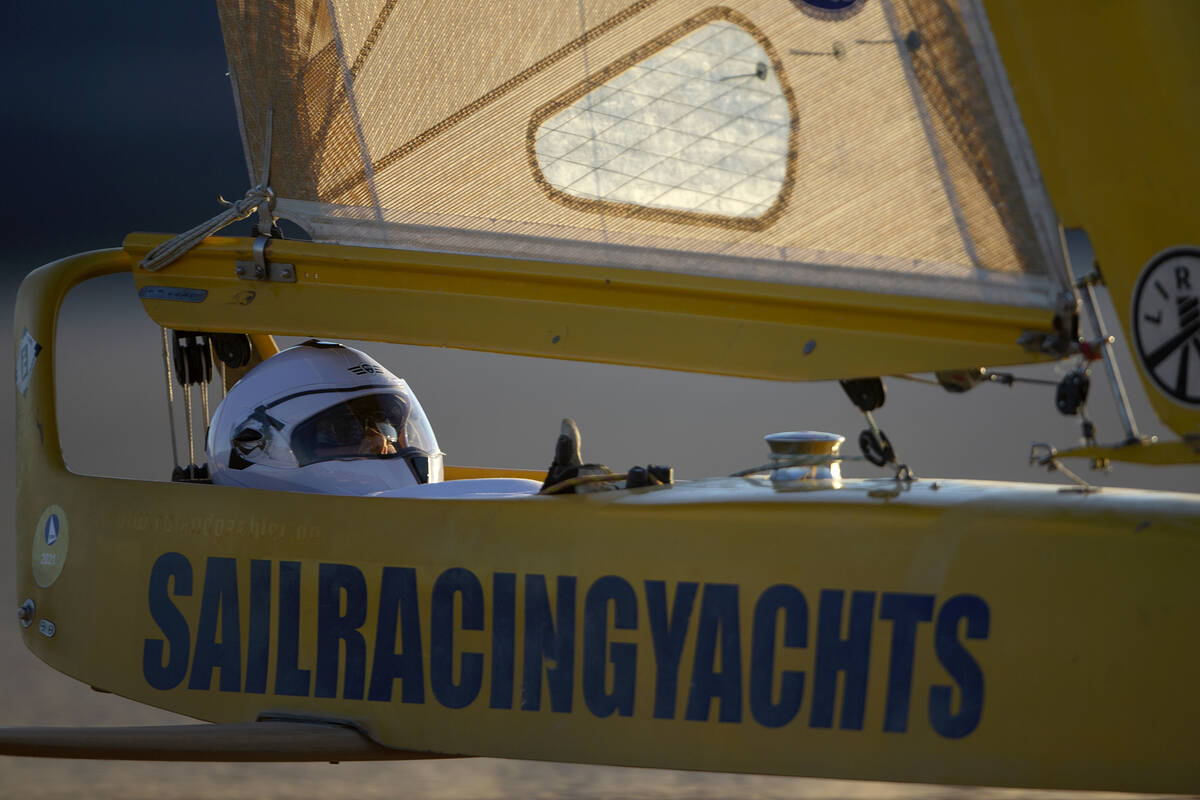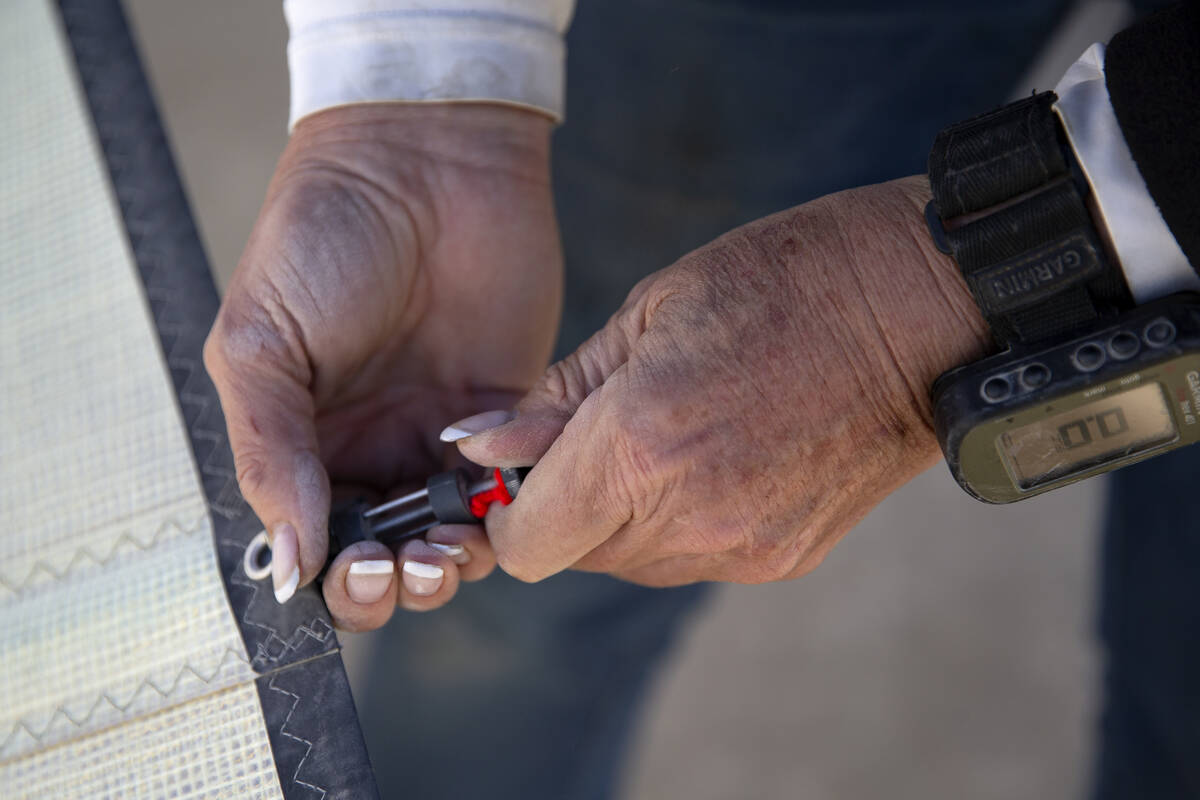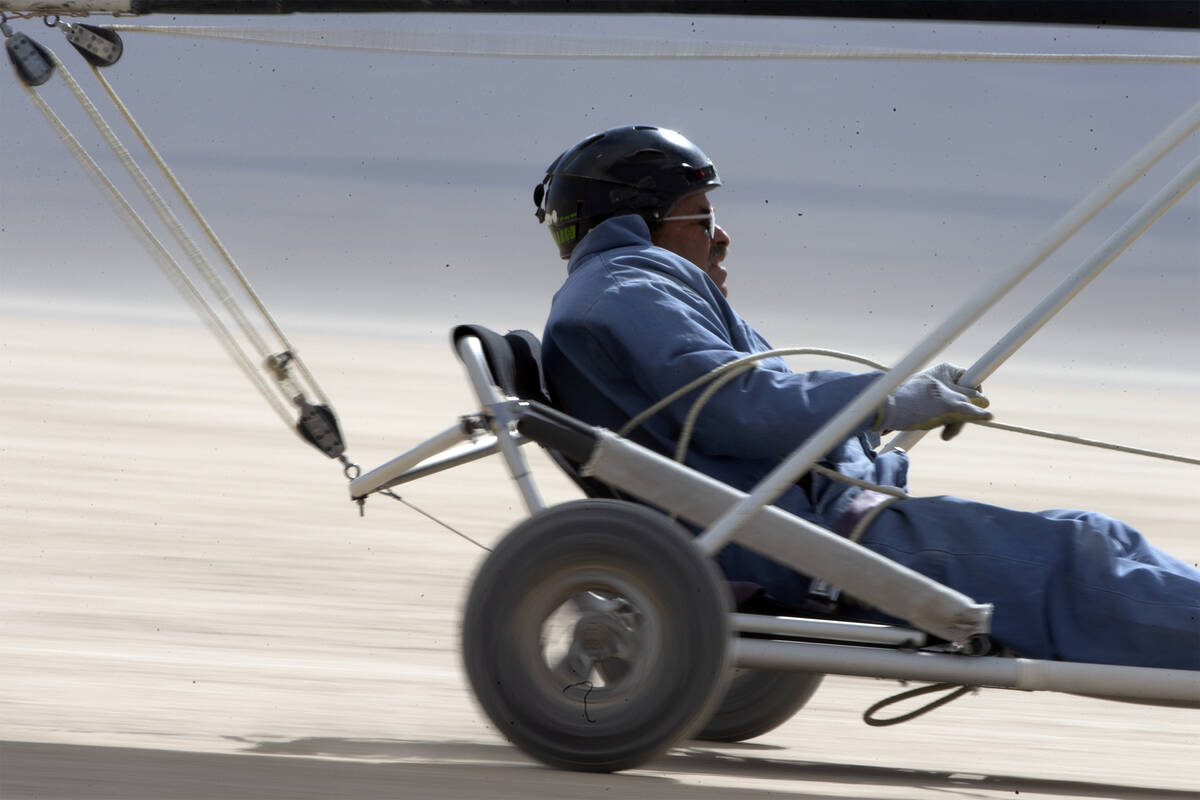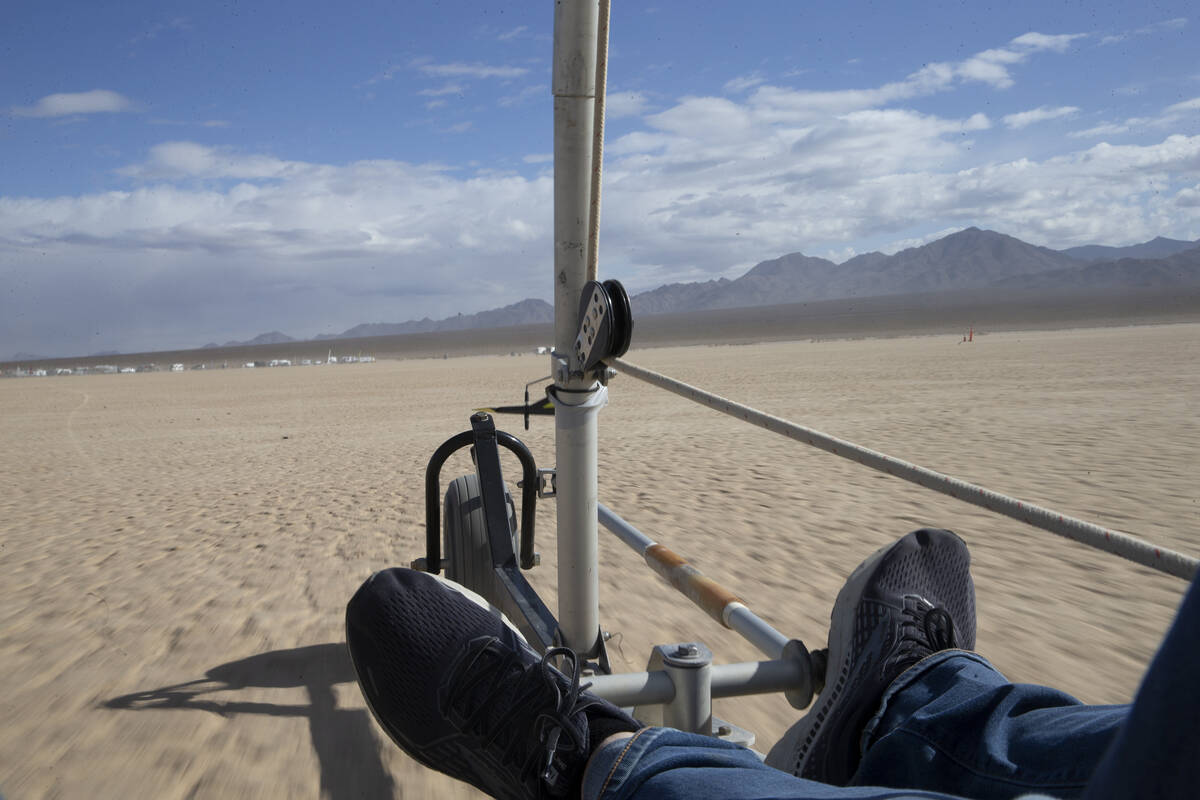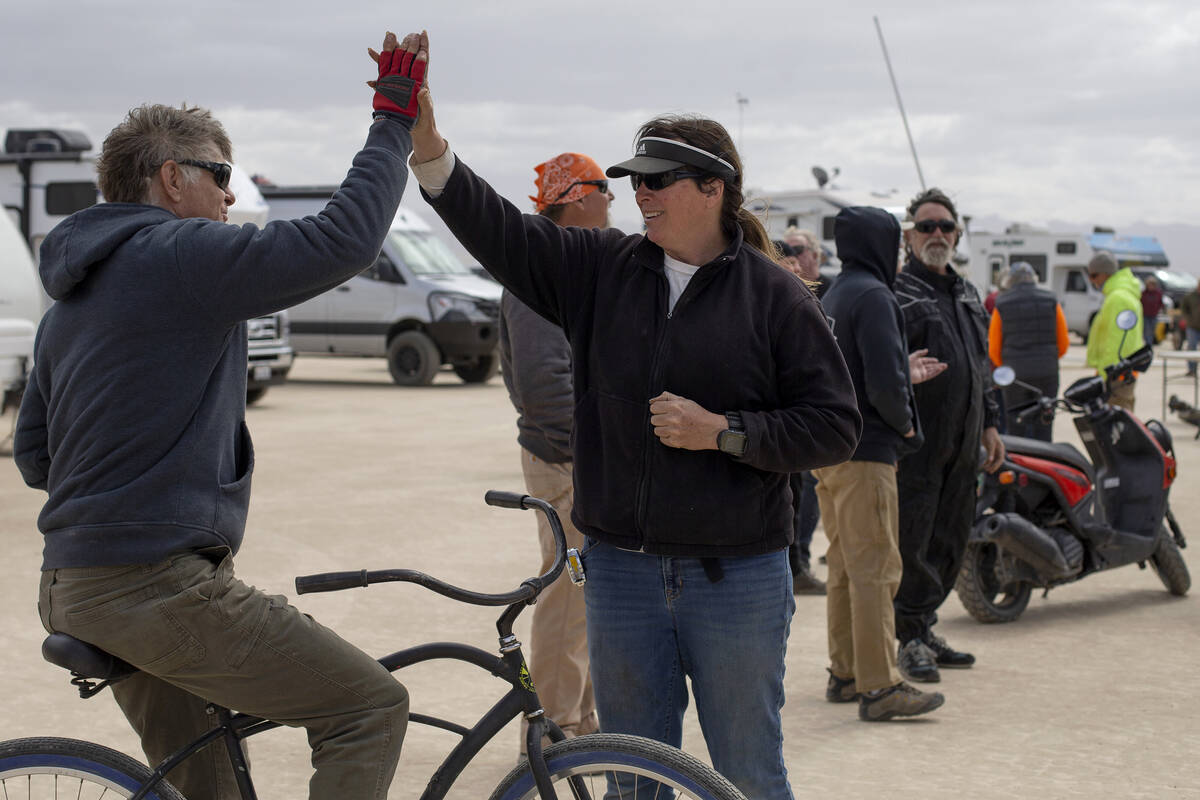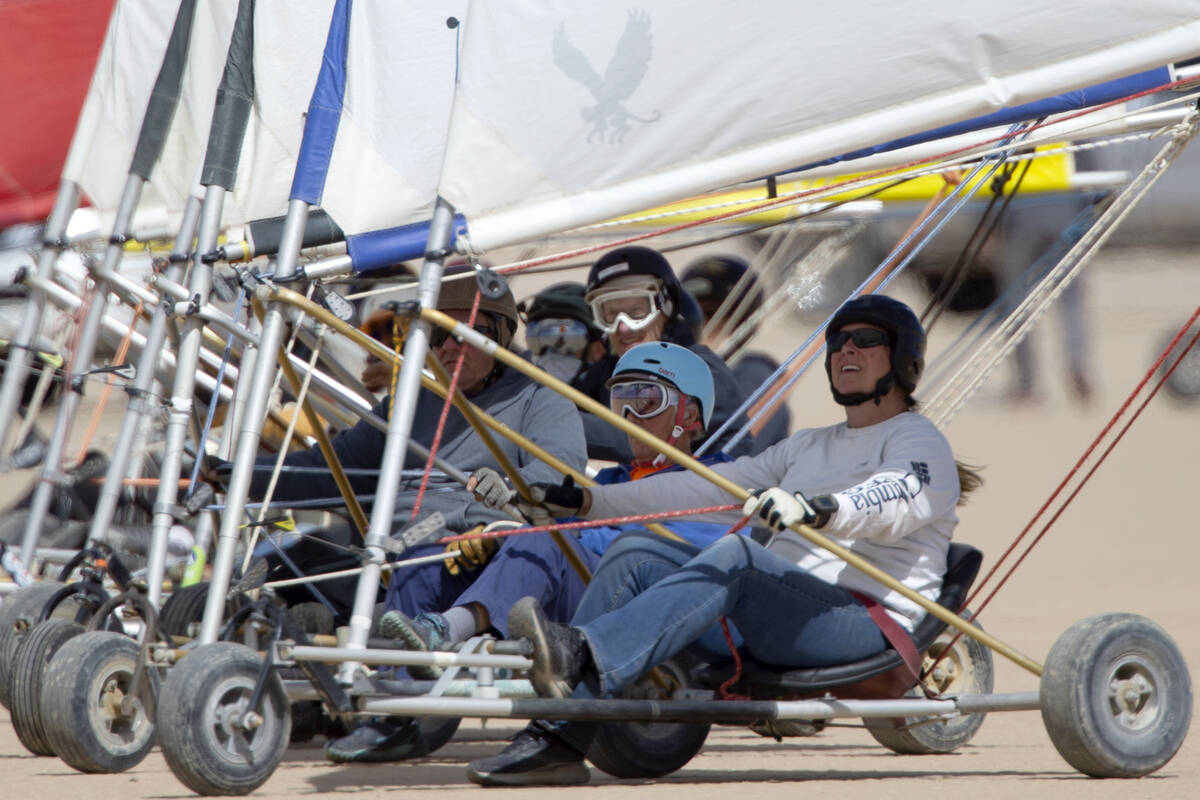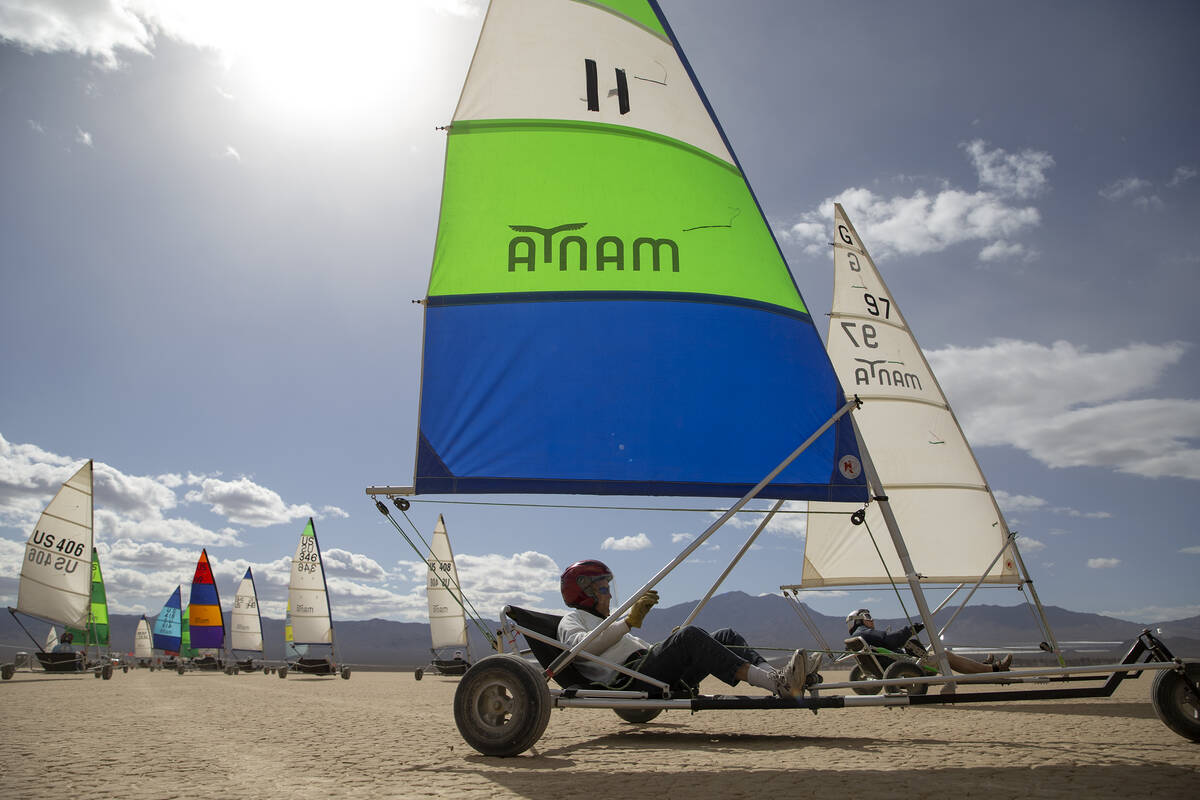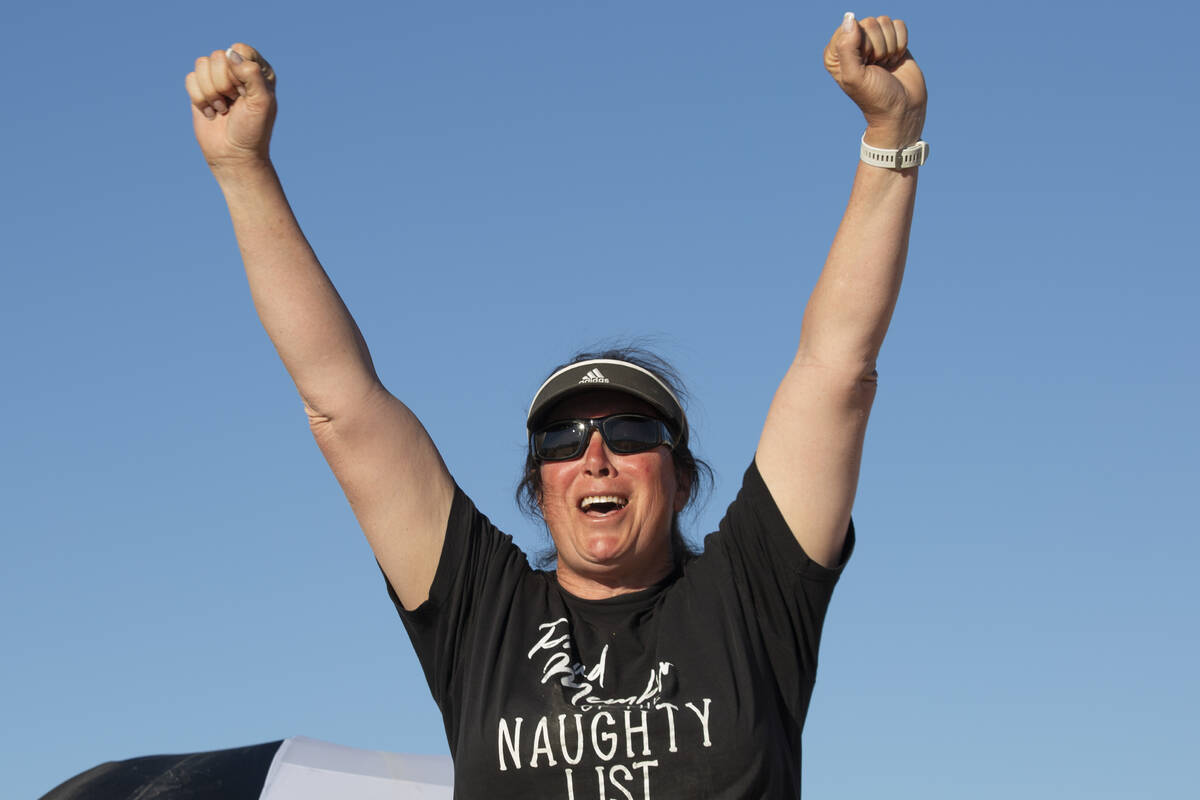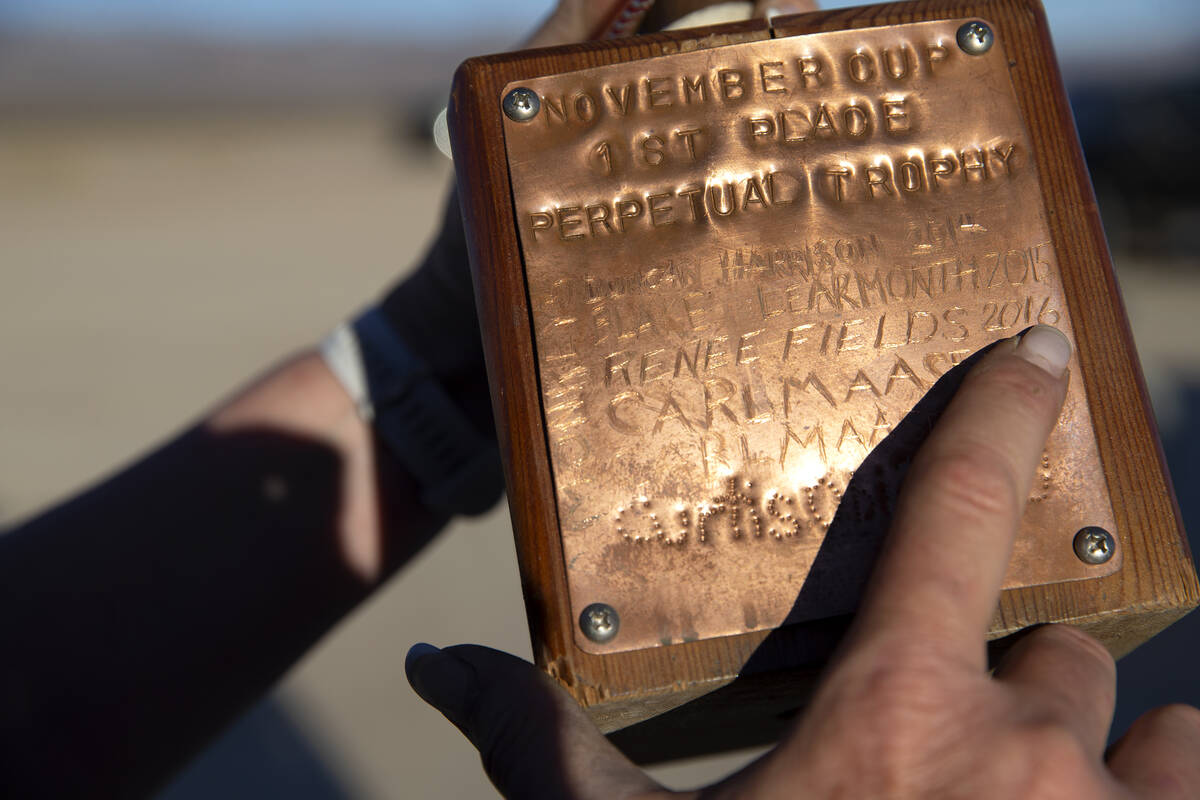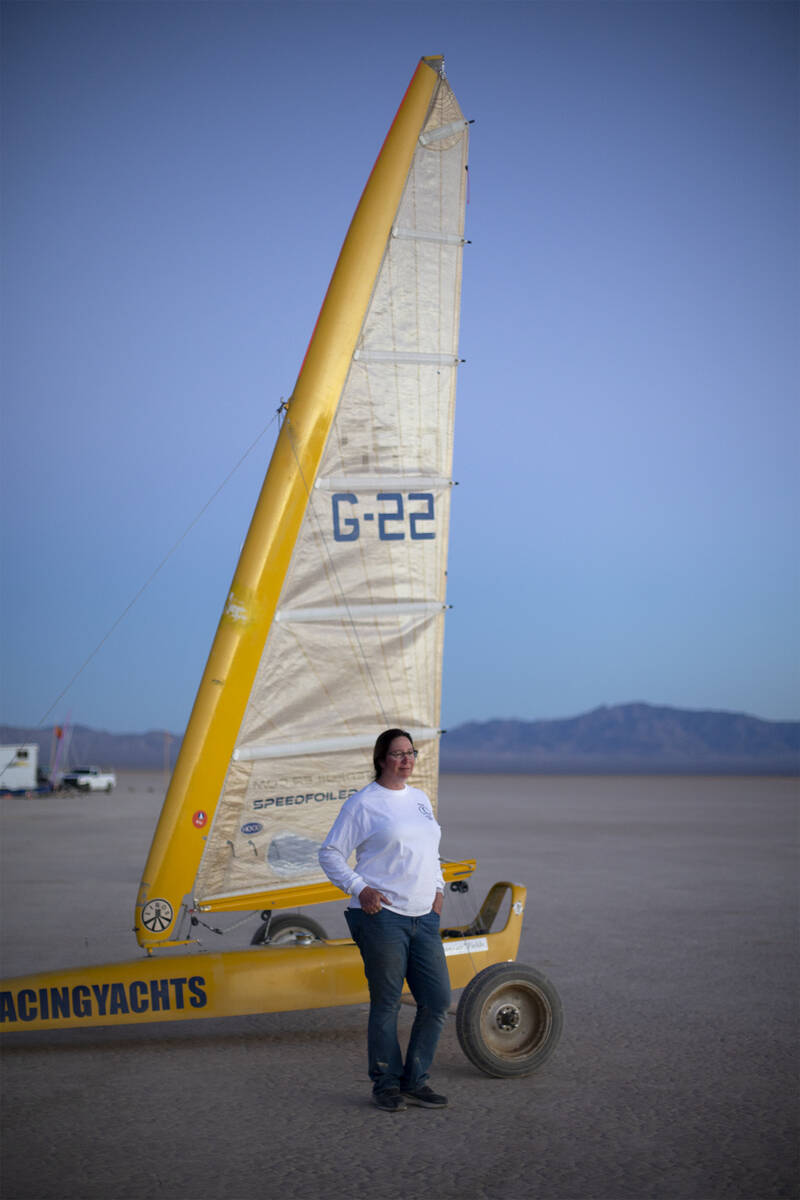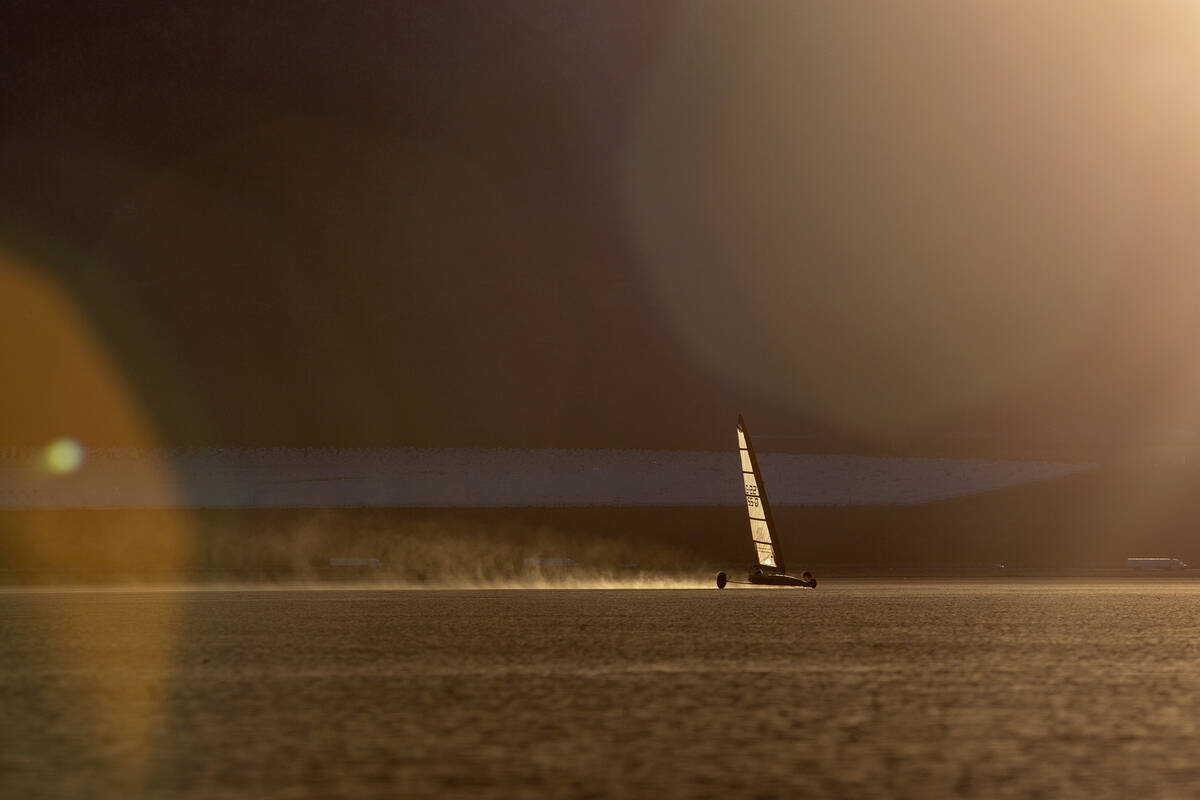Nevada woman ‘finds her calm’ by land sailing at 70 mph
Renee Fields finds her peace sailing 70 mph in a land yacht across a dry lake bed under the hot desert sun.
The 58-year-old Reno woman, a U.S. veteran who speaks five languages and works as a forensic engineer, found land sailing after she was mistakenly diagnosed with cancer in her shoulder in 2012. When she found out it wasn’t cancer, she made tackling her bucket list a priority.
This included trying extreme sports like motorcycle racing and water sailing, which led her to start land sailing in 2014 and compete in races in Germany and Ireland.
“For fun, what I would say is we sail on boats that don’t float, on lakes that have no water — the fastest in the world,” the self-proclaimed adrenaline junkie said.
Land sailors from around the world gathered last month at Ivanpah Dry Lake, a dry lake bed near Primm, for America’s Land Sailing Cup, the sport’s national championship. Sixty-eight sailors, also known as pilots; 90 boats, and about 120 people turned out for the weeklong, regatta-style competition, a larger group than usual because of COVID-19 canceling the 2020 and 2021 events. Fields was one of only three women competing.
Nevada’s dry lake beds have flat, sprawling playas that are ideal for nonmotorized, wind-powered vehicles to glide at speeds that can reach more than 100 mph in 10 to 50 mph winds. Ivanpah Dry Lake is considered the best of the best for land sailing in the nation and world, according to the Bureau of Land Management’s California field office.
“We are the fastest and we have these beautiful dry lakes that just make amazing courses for sailing upwind and downwind on the beaches,” Fields said. “Here we can set a windward leeward course and truly have to swim upwind and downwind to the marks.”
The sailors compete unless there is no wind or wind is above 35 mph, depending on the class. They take their place at the starting line after ensuring their land yachts are ready with proper tire pressure and sail flexion. Their yachts, or boats, are steered with their feet, altering the sail through the tension of a rope controlled by their hands.
Experience and consistency are key, said North American Land Sailing Association race director Dennis Bassano, who has been sailing since he was 12 years old.
“You can’t prove you’re fast until you go out and win a regatta. Because you can go out and go faster than someone for five minutes, sure, but can you do it over a week and over seven or 10 races?” Bassano said.
While many land sailors find success through years of racing, Fields started winning competitions soon after she began in 2014, taking third place at the world championships. Her first big win was at America’s Land Sailing Cup in 2016, where she took first place in the Manta Twin class.
Fields said she learned quickly by studying wind patterns, sailing techniques, and the experienced pilots, as well as getting as much seat time as possible. Seat time means that Fields is racing a lot — in all four classes, a difficult feat because she has to rush to switch boats and make it to the starting line in between races.
She’s the only woman in the United States to race a “big boat,” or Class 3 land yacht. These boats are 16 feet long and 12 feet wide with a 20-foot mast.
“As I was coming up and learning, you know, I’d get that odd race up and they would say, ‘Oh, you got a lucky run, good job,’ you know, instead of ‘Good job.’ And that tends to happen to a lot of women in every sport,” she said. “So if you want to do well, you do well in the fleet, period. … I have always been driven to do well, and when the guys say, oh, you know, kind of pat you on the head, say it’s OK. I fight that much harder for equality.”
Fields fought in this year’s regatta and won. She took home first place in the Manta Twin class and second place in Manta singles and Standart classes. Of the three women racing this year, all took home winning trophies.
Sheila Eberly, 71, who has been land sailing for 50 years, took home her typical first place in Manta singles.
Both Eberly and Fields try to recruit more women for the sport, which many feels has dwindling numbers due to aging sailors and barriers to entry like cost, time commitment and a lack of mentorship.
“The challenge is, it is a bit of a dying sport,” Fields said. “Twenty, 30 years ago, there would be 100 yachts almost every weekend down either here or at El Mirage dry lakes over by L.A.”
Eberly, Fields, and German pilot Anke Meunch, known as “The Golden Girls” to their sailing family, encourage women to enter the sport. “I think we really need to recruit younger people,” Eberly said.
After the wind dies down in the evening, or speeds are too high to continue sailing safely, bonfires, beer and shared spreads of food emerge.
“There are tall tales and lots of camaraderie around the campfire and we share food and break bread and, you know, it’s like family. It’s truly like family,” Fields said. “And, you know, we’ll put all the boats away and we’ll stay in touch and we’re looking forward to the next opportunity to gather.”
Some pilots won’t sail until next year’s regatta. But Fields will get her seat time whenever she gets a chance — whether that is at home in Northern Nevada or in her next international competition.
“It helps calm me, I find my calm at 70, 80 miles an hour with my hair on fire in the breeze and controlling the wind on the edge. It’s been in my spirit. That’s where I find a serene place.”
For more information at North American Land Sailing Association, go to https://www.nalsa.org/.
A previous version of the



